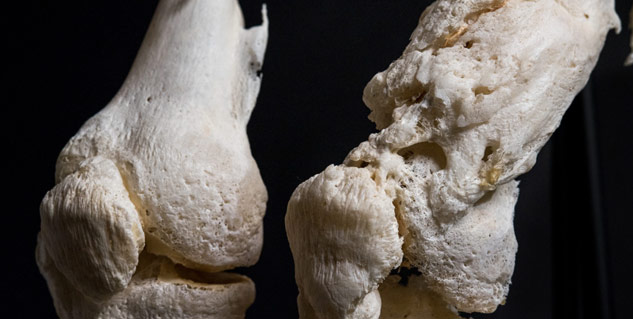The Stone Man's disease, also called fibrodysplasia ossificans
progressiva (FOP), is a rare disabling disorder that can gradually
cause the body's soft tissues to turn into bone, a process known as
heterotopic ossification. It is a potentially life-threatening
disease that leads to a critical decline in an individual's mobility
and functioning. Heterotopic ossification results from a genetic
mutation, causing the overexpression of the gene ACVR1. Ultimately,
it results in irregular bone growth in soft tissues such as the
tendons and muscles. This overstimulation can consequently lead to
severe disability.
The initial diagnosis for FOP commonly occurs during childhood,
where the appearance of bony lumps around the back, neck, and limbs
can be used as indicators of the condition. These nodules can
eventually fuse, causing a broader spectrum of complications such as
difficulty in breathing, consumption of food while swallowing, and a
compromised immune system with an elevated risk of infection.
The disease is uncommon, with an estimated 1 in 2 million persons
worldwide suffering from FOP. The infrequent occurrence of the
following disorder is a significant reason a successful treatment to
eradicate this ailment has not yet been identified. In most cases,
medical workers are unfamiliar with the disease, which can lead to
late diagnosis and mismanagement. However, with the global
revolution in research and technology, medicines to help condense
the emergence of crucial symptoms and prevent loss of life have been
developed. Treatments might range from surgery to rectify
abnormalities to physical therapy and medicines for supported
movement and controlled inflammation.
Dr. Fredrick Kaplan and Dr. Eileen Shore have dedicated their
careers to research and development against FOP, specifically to
find a cure.
Their knowledgeable assistance helped identify the genetic mutation
responsible for this ailment's rise, acting as a breakthrough in the
early 2000s.
Harry Eastlake is amongst a handful of the prominent identities
known to have fought against the grave disease. He was a Native
American born in the 1930s, recognized for his love for music and
art. He was diagnosed with FOP at the age of ten, and continued to
fight a tense battle for three decades before he passed away in
1973. His soft tissues had converted to bone, causing difficulty in
daily activities such as dressing and eating. Despite these physical
limitations, Harry was always admired for his positive attitude and
personality. After his death, his body was donated to a museum in
Philadelphia, where it continues to set an example for the impact of
FOP.. His narrative of a lifelong war against the threatening malady
has strongly encouraged individuals around the globe to raise
awareness relative to the disorder and other rare disabilities.
This thin-on-ground disease has attracted the attention of prominent
researchers who have come together to ensure a permanent cure and
provide ease against this devastating condition.
Statice / Stone Man's Disease
The Stone Man's Disease

Fibrodysplasia ossificans progressiva (FOP), is a rare disabling disorder that can gradually cause the body's soft tissues to turn into bone.

